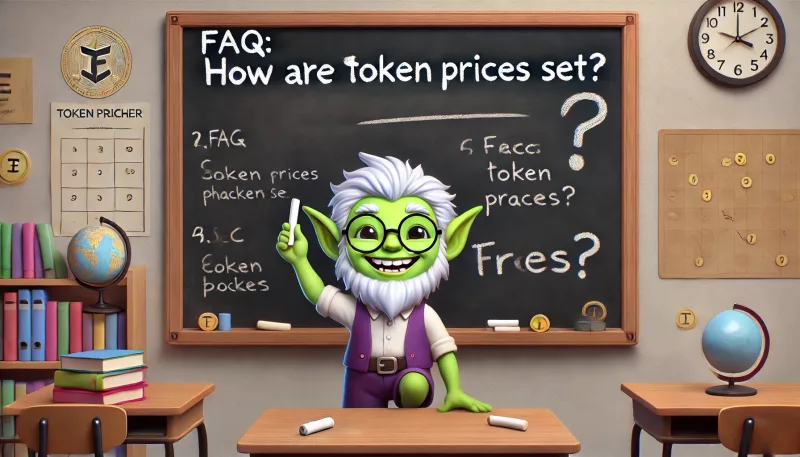How are Token Prices set Podcast
Understanding Token Pricing in Liquidity Pools on the Goblins Protocol
Token prices in a liquidity pool are determined by the quantities of each token within the pool. The Goblins Protocol uses an automated market maker (AMM) model to maintain a constant product formula, ensuring the pool’s balance.
Constant Product Formula: x * y = k
- x: Quantity of token0
- y: Quantity of token1
- k: Constant product of the token amounts
How the Goblins Protocol Maintains Balance
- Constant Product Mechanism:
- Formula Application: The liquidity pool contract maintains a constant value (k) using the formula x * y = k.
- Ensuring Stability: This formula ensures that the product of the token amounts remains constant, regardless of individual token quantities.
- Swaps and Price Adjustments:
- Token Exchange: During each swap, a specific amount of token x (token0) is removed from the pool in exchange for a certain amount of token y (token1).
- Balance Adjustment: To keep the constant k, the smart contract automatically adjusts the token balances. This adjustment changes the token prices within the pool.
- Price Impact: The larger the swap relative to the pool’s size, the more significant the price impact, as the constant product formula enforces balance.
Additional Tips and Considerations
- Liquidity Pool Dynamics:
- Price Slippage: Large trades can cause price slippage, where the expected price differs from the actual price received. This occurs because the constant product formula adjusts prices based on the pool’s liquidity.
- Impermanent Loss: Liquidity providers may experience impermanent loss when the value of their staked tokens changes relative to holding them outside the pool. Understanding this risk is crucial for effective liquidity management.
- Optimal Pool Participation:
- Small vs. Large Pools: Smaller liquidity pools are more susceptible to significant price changes from large trades, while larger pools can handle bigger trades with less slippage.
- Diversification: To mitigate risks like impermanent loss and slippage, consider diversifying your liquidity across multiple pools and tokens.
- Monitoring and Adjusting Positions:
- Regular Updates: Regularly monitor your liquidity positions and the pool’s performance. Adjust your strategy based on market conditions and pool activity.
- Analytics Tools: Utilize analytics tools to track pool metrics, including liquidity, volume, and price movements, to make informed decisions.
- Strategic Liquidity Provision:
- Targeted Ranges: In protocols like Goblins that support concentrated liquidity, providing liquidity within targeted price ranges can optimize returns by focusing on high-activity areas.
- Understanding Market Trends: Stay informed about market trends and trading volumes to strategically place your liquidity and maximize fee rewards.
Conclusion
Token prices in the Goblins Protocol’s liquidity pools are dynamically set by the quantities of each token, adhering to the constant product formula x * y = k. Understanding this mechanism, along with the implications of swaps and price adjustments, is essential for effective participation in liquidity pools. By monitoring market conditions, diversifying your positions, and leveraging analytics tools, you can optimize your liquidity provision strategy and manage risks in the decentralized finance ecosystem.

